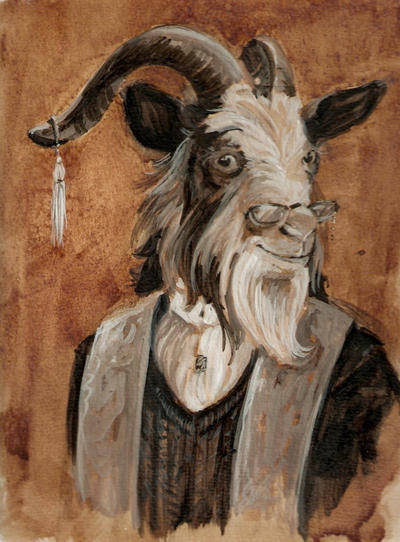
In the first hundred pages of Wicked, Gregory Maguire rarely gives the reader any information as to what Elphaba is thinking. Neither the Munchkinlander section nor the Gilikin section (up to page 100) are told from Elphaba’s perspective, and her thoughts and beliefs seem, at least to me, to be elusive to the other characters,
which makes her somewhat of a difficult character to begin to know. Even in the prologue, when the story is told from Elphaba’s perspective, the focus is on the gossip of the other characters, rather than on what Elphaba is thinking. However, even though this doesn’t give the reader the most accurate view of Elphaba’s thoughts and character, it does give great insight as to how the other characters and society in general view and treat her, which is often less than kindly. This in turn could give the reader an explanation of why Elphaba eventually comes to be known as the Wicked Witch of the West. Thus, it is plausible that this could connect to one of the quotes Maguire chose to put at the beginning of Wicked:“Great men…are but the labels that serve to give a name to an event, and like the labels, they have the last possible connection with the event itself. Every action of theirs, that seems to them an act of their own free will, is in an historical sense not free at all, but in bondage to the whole course of previous history, and predestined from all eternity” (Leo Tolstoy, War and Peace).
Moreover, while Elphaba, or the Wicked Witch of the West, is viewed as wicked and evil, and only these two things, in The Wonderful Wizard of Oz, Wicked humanizes her.

From her birth, beforeshe was even capable of doing anything worthy of punishment, the three peasants that aided Melena in her birth are already considering murdering her, believing that “[t]o kill it was the kindest course of action” (20). The next minute Elphaba does bite off the fishwife’s finger. Yet, despite this, it still seems that Maguire intended the reader to have sympathy for
(http://read.gov/books/pageturner/2006gen32405/#page/182/mode/2up)
Elphaba. Though it is unlikely that Elphaba knew it, the women were planning on murdering her, so it seems biting off a finger is not something they are
unworthy of. Moreover, like Dorothy, who threw the water on the witch, not knowing it would kill her, Elphaba, as a baby, does not understand the sharpness of her teeth, and thus cannot be blamed for the amputated digit.
In fact, she was forced to wear a sling to prevent her from “biting her own hands off” (26), further showing her lack of understanding.

Furthermore, Elphaba’s own mother, at first, can’t “bear to look at the thing” (22), and Nanny must look away from Elphaba when holding her in order to “keep from vomiting” (25). It seems, from birth, that Elphaba was put in a
(http://www.clickonf5.org/web/free-online-application-track-baby-essesntials/2938)
situation lacking in the common social response a stranger would show to a baby, or even a mother to her child; such a life, it would seem, could easily shape a person into someone wicked (though it has yet to been proven if that is what will happen in Wicked), enslaving him or her to the “course of previous history” (Leo Tolstoy, War and Peace).
Works cited:
Maguire, Gregory. Wicked: The Life and Times of the Wicked Witch of the West. New York: HarperCollins Publishers Inc., 1995.











































